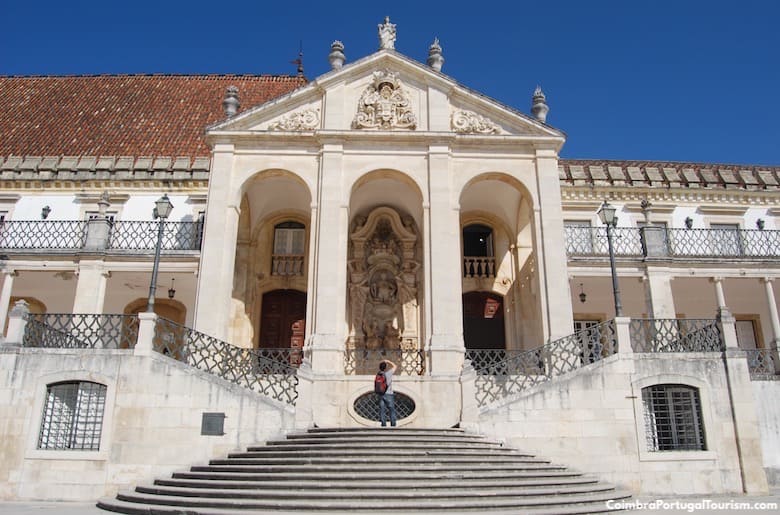
Coimbra University used to be a royal palace
Coimbra University is one of the oldest in Europe and one of only five in the world listed as a World Heritage Site . It was founded in 1290, and occupies its current building since 1544. It’s the former royal palace, but very little remains of the royal residence, as it was remodelled and extended over the centuries, and especially in the 1700s.
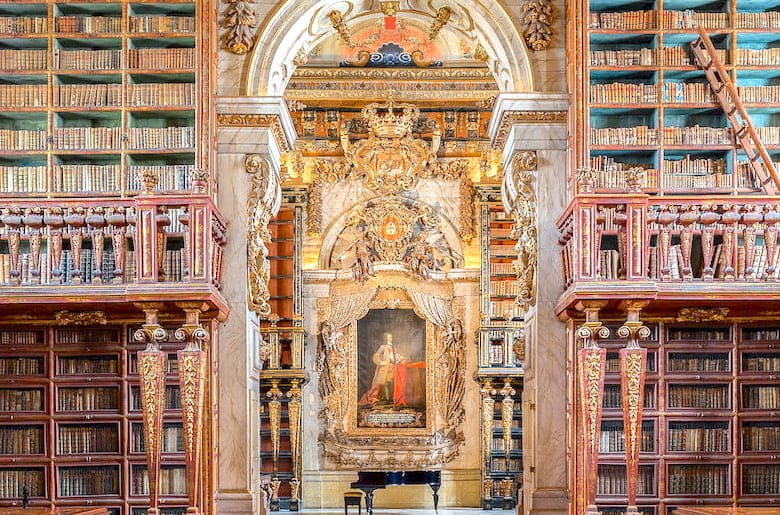
The magnificent Coimbra University library
Its library, which is recognized as one of the world’s finest, dates from that period, and was a gift of King João V, who, thanks to the gold from the colony of Brazil, was one of Europe’s richest monarchs. The gold-covered library is filled with 40,000 books, and is accessed through a room that was the Academic Prison from 1773 to 1834. In order to preserve the books from insects, the library has two small colonies of bats, which come out at night.
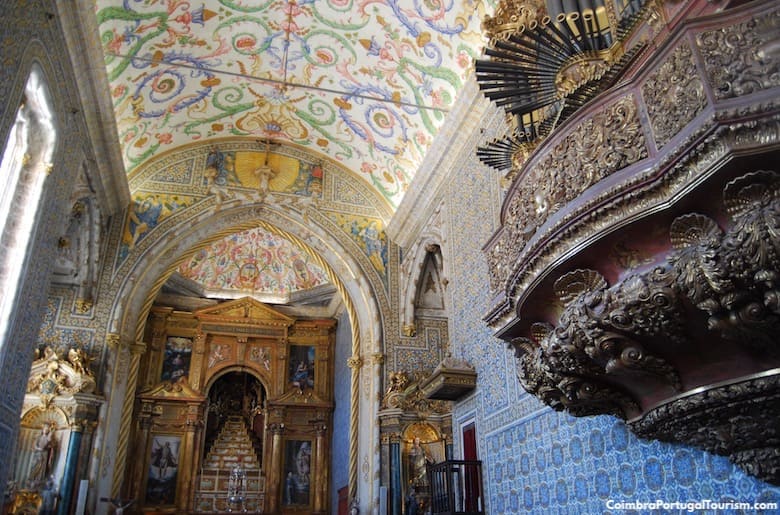
The chapel is one of the hightlights of a visit to the university
Gold leaf also covers much of Capela de São Miguel, the ornate chapel with a brightly-painted ceiling. It dates back to the 11th century, but its current layout is from the 1500s. Its magnificent pipe organ from 1733 is still used today.
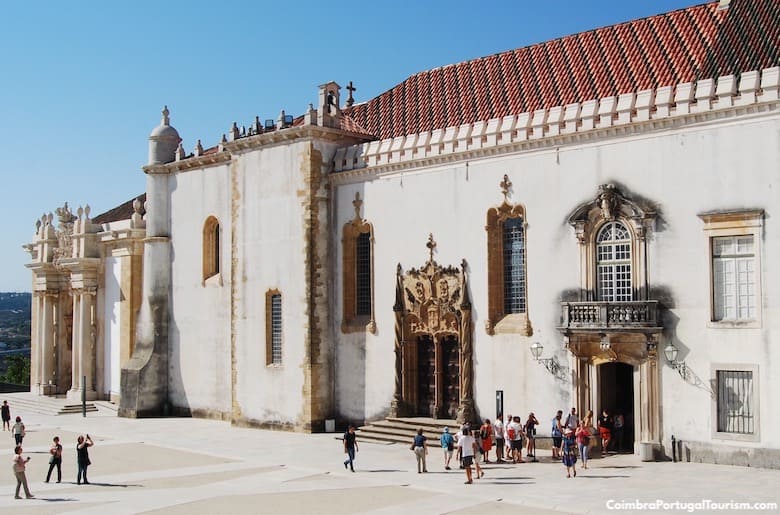
The university's buildings mix different architectural styles
In addition to the chapel, the only vestige of the former royal palace is Sala dos Capelos (Graduates’ Hall), which was the Throne Room and is decorated with 17th-century portraits of Portugal’s kings up to that time. It has been used as an examination room, but is now the stage of ceremonies and academic events.
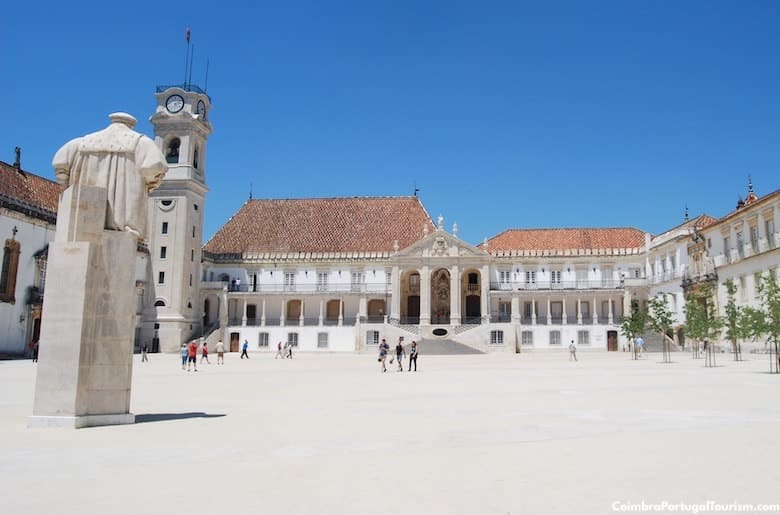
It's possible to go up to the top of the clock tower
The university’s iconic clock tower is 34 meters (112 feet) tall and was added in the early 1700s. It was used for astronomical observations, which explains its lack of a roof, which is quite rare in similar towers around the world. Visitors are now allowed to head to the top for a view over Coimbra.
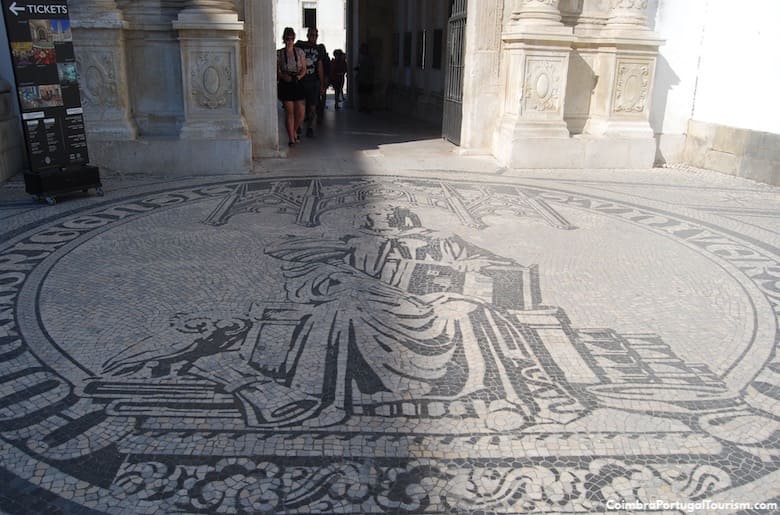
The Roman goddess Minerva welcomes visitors on the cobblestone pavement
This historic part of the university surrounds a courtyard accessed through the 17th-century “Porta Férrea” (“Iron Gate”), which was the gateway to the royal palace. Before you enter, notice the traditional Portuguese cobblestone pavement depicting Minerva, the Roman goddess of wisdom, medicine, commerce, handicrafts, poetry, and the arts.
The buildings outside date from the mid-20th century and are colleges and departments not open to the public. Nearby, by the New Cathedral, are two other historic buildings that are now the university's museums:
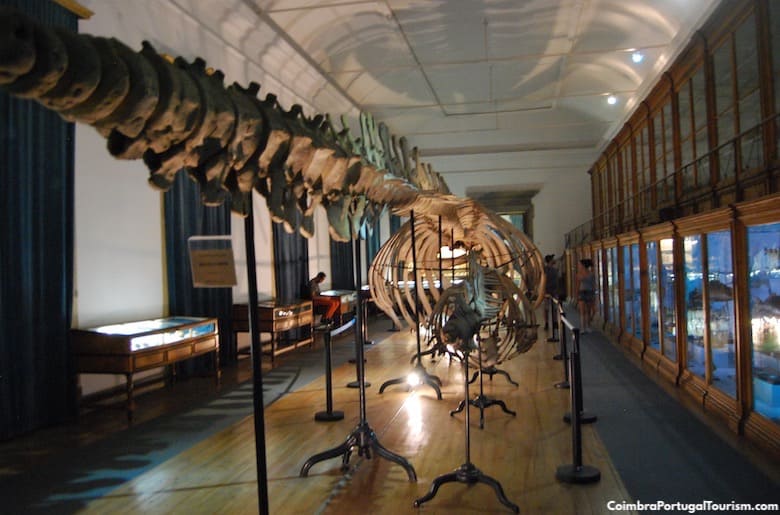
The university's impressive collection of natural history
Natural History Museum - Housed in a former Jesuit college behind the New Cathedral, this museum displays the university’s collection of natural history and scientific instruments. Many of those are considered by the European Physical Society to be among the rarest and most important in Europe, but the highlights are the fossils, minerals, and especially the skeletons and embalmed animals. There are peacocks, snakes, and a large whale which takes up almost an entire room. Many were brought from expeditions around the Portuguese Empire in Africa, Asia, and Brazil at the end of the 18th century.
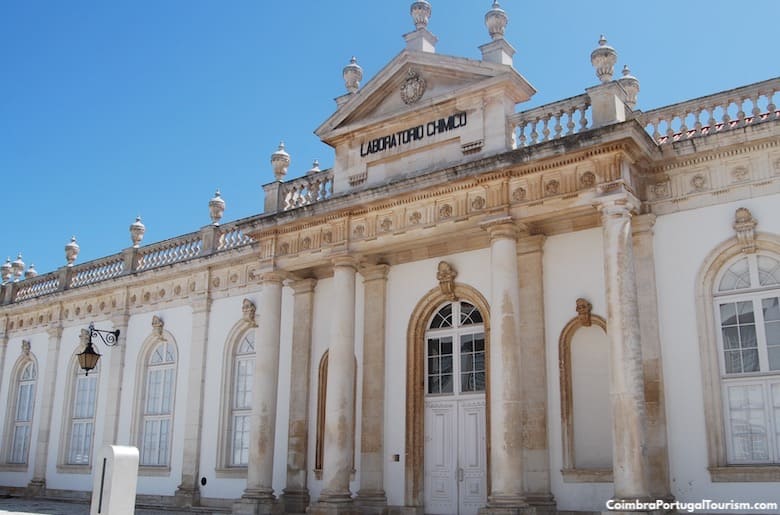
The former science lab is now the Science Museum
Science Museum - One of Coimbra’s most beautiful buildings stands right across from the Natural History Museum. It’s the university’s former science lab (one of the world’s oldest) and has been turned into a science museum. Built in the 18th century and restored in 2006, it promotes science to visitors of all ages through modern and interactive displays exploring a variety of themes.
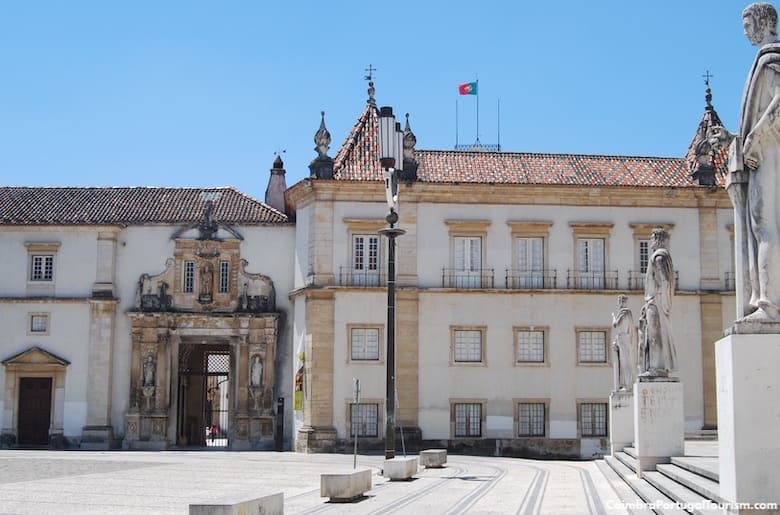
Outside the old buildings are sculptures and new buildings from the 20th century
Today, over 20,000 students of 80 different nationalities study at Coimbra University, and their traditions are part of the city’s cultural life. Their annual “Burning of the Ribbons” ceremony in May and other events related to the end of the academic year take place in different parts of the city. The highlight is a “serenade” of male graduates on the steps of the Old Cathedral, who sing fado music to the sound of guitars, as a farewell to student life.
Visiting Coimbra University
Anyone is free to enter all parts of the university that are open to visitors at any time, except the library. Only 60 people are allowed inside at a time, so when you purchase your ticket you’re given one of the scheduled times (which happen at 20-minute intervals). Be sure to buy your ticket early in the morning, to guarantee a spot at a convenient time. If you show up in the morning and are given a time in the afternoon for the library, you may visit attractions nearby in between. These include the Machado de Castro National Museum and the New Cathedral. However, you may also end up spending much more time than anticipated at the Natural History Museum and the Science Museum, and by the time you visit those, it may be time to head to the library.
Insider tip: If you end your visit at lunch time (or if it’s time for a meal between the visits to the university’s different buildings), head to the Machado de Castro National Museum nearby, which has a cafeteria offering good-value lunches with a view.
Admission and Tickets to Coimbra University
The ticket to visit the university is bought from the ticket office located on the left side of the square, when facing the entrance gate to the main buildings. It includes admission to the university’s two museums (Science Museum and Natural History Museum), which face each other down the hill from the university, on the street to the right of the New Cathedral. That’s the regular ticket, which costs €12.50, but there’s a second ticket which includes everything except the library, for €7.00. We don’t recommend this second ticket, as the library is the highlight of the university. Those who want to head up to the top of the clock tower for a view over the university and the city, pay an extra €2.00.
It’s open from 9am to 7pm between March and October (the Science Museum opens at 10am). From November to February it’s open from 9am to 1pm and then from 2pm to 5pm. The tower only opens between April and October, from 10:30am to 7pm. The ticket office opens at 8:45 (it closes from 12:45pm to 1:45pm from November to March).